
All iLive content is medically reviewed or fact checked to ensure as much factual accuracy as possible.
We have strict sourcing guidelines and only link to reputable media sites, academic research institutions and, whenever possible, medically peer reviewed studies. Note that the numbers in parentheses ([1], [2], etc.) are clickable links to these studies.
If you feel that any of our content is inaccurate, out-of-date, or otherwise questionable, please select it and press Ctrl + Enter.
Diet for enterocolitis
Medical expert of the article
Last reviewed: 04.07.2025
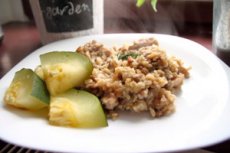
This disease affects the walls of the large and small intestines with an inflammatory process, but since in most cases the pathology begins to capture the stomach tissues, the diet for enterocolitis becomes a necessary element of the treatment protocol. This is what will be discussed in this article.
Treatment of enterocolitis with diet
Doctors conditionally distinguish between the acute and chronic phases of this disease, but the treatment protocol in both cases is not very different from each other. One of the points of stopping the problem is the treatment of enterocolitis with a diet. At the same time, doctors - nutritionists have developed a special diet - table No. 4 - which took into account all the requirements of restrictions.
At the moment of exacerbation, the patient should be transferred to a lighter diet. The main postulates of this dietary adjustment can be summarized in several rules:
- With a certain clinical picture (acute phase of the disease), the doctor prescribes a day or two of complete fasting for the patient. During this period, the patient must drink only water frequently, but in small sips.
- Food should be easy to digest in the stomach.
- Avoid heavy, fatty foods.
- It is advisable to cook dishes by steaming, or, as a last resort, by scalding.
- Any porridge is allowed, especially water-based and slimy ones.
- Cereal decoctions. For example, rice decoction is useful.
Enterocolitis is rarely diagnosed independently. In most cases, it is still accompanied by another pathology, that is, the inflammation spreads to other organs. Therefore, the diet, like all treatment, is prescribed based on this fact.
The essence of the diet for enterocolitis
Restriction in nutrition and a number of products is one of the key points in the treatment of many diseases, especially in the pathology of organs directly related to the digestive process. Since the small and large intestines are precisely such organs, the result of their treatment is directly related to the diet that a person should adhere to while undergoing therapy for the disease in question. The essence of the diet for enterocolitis:
- Complete exclusion of hard-to-digest and fatty foods.
- Peppery and spicy dishes are also prohibited.
- Spices, baked goods, and smoked foods should be eliminated from the diet.
- Raw vegetables and fruits are prohibited, especially those that cause increased gas formation or can contribute to the fermentation process in the stomach.
- A number of other products are subject to exclusion, which will be discussed in more detail below.
- Supermarket products containing stabilizers, colorants, flavor enhancers, and preservatives should disappear from the diet of such a patient.
- Categorical refusal of fast food products.
- Avoid overeating. Meals should be frequent and in small portions.
- At the same time, nutrition must be complete and provide a person with a full volume and set of nutrients and a vitamin-mineral complex.
The basis of the diet is pureed soups, kissels, porridge - mash. Only after the patient's health improves, other products are gradually added to the diet: lean meat products in the form of, for example, meatballs or steamed cutlets, boiled fish or cutlets from fish meat.
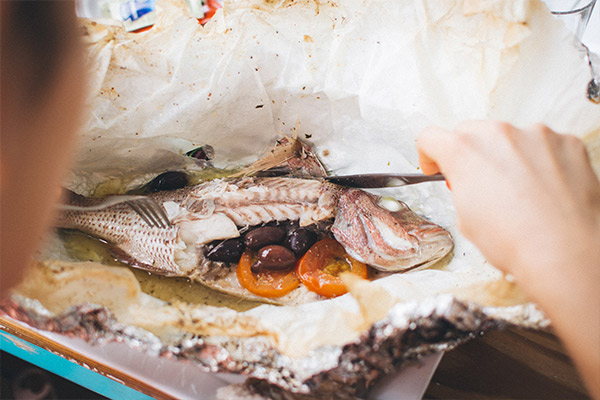
The period of adherence to dietary nutrition is mainly based on the stage of the disease (acute or chronic) and its severity. With the right therapy and adherence to the necessary diet, on average, dietary restrictions affect one and a half months. If the disease was recognized at an early stage of development, a complete recovery is possible. A prolonged course of the disease and its transition to a chronic stage can cause irreversible pathological changes in tissues, which adversely affects the human body as a whole. In this case, the patient will have to limit himself in nutrition for the rest of his life.
Diet for acute enterocolitis
An exacerbation of the disease begins with sharp pains in the epigastric region of the intestine. The first thing that is prescribed to such a patient is complete rest. The diet for acute enterocolitis begins with one or two fasting days, during which no food is allowed. This will allow the inflamed mucous membrane to calm down a little. Against the background of fasting, the patient is not only allowed, but also required to drink water. At the same time, this must be done often enough, but in small sips.
To diversify the "nutrition", water can be partially replaced by warm unsweetened tea. A little lemon or blackcurrant juice can be added to the liquid. This combination will make the drink more fortified with vitamins, especially vitamin C.
To raise hemoglobin and maintain strength in an organism greatly weakened by illness, you can add about a tablespoon of natural red wine to tea (per 200 ml of tea).
If the patient's condition has somewhat stabilized, then on the second or third day it is allowed to introduce apples into the diet, which are taken by the patient in the form of applesauce. Apples should be chosen not sour, but sweet varieties. About one and a half kilograms of this fruit are allowed per day.
Further, if the treatment is on schedule and there are no breakdowns, then the number of permitted products gradually increases. At the same time, the rule continues to apply to them: no fatty, spicy, hot, smoked and fried products. The main thing is that these foods should not irritate the mucous membrane of the digestive tract, and also not be a catalyst for excessive production of digestive juice. They should not act as activators of intestinal peristalsis.
Gradually, the range of acceptable products expands, but a menu that includes fried fish or meat, as well as vegetables, can be gradually introduced into your diet only after a certain time and with the permission of the attending physician. Such a smooth entry into normal volumes and a list of dishes will help to avoid the development of pathology into a chronic stage. If the procedure is effective, it can take from seven to ten days.
Subsequently, when discomfort in the intestines occurs, a person who has gone through an acute form of enterocolitis can switch to diet No. 4. This will allow not to aggravate the situation, but at an early stage to reduce irritation of the mucous membrane and then, with less effort, to stop the problem.
If the patient's body is prone to the development of fermentation processes in the intestine, he is prescribed diet table No. 4a. This table is distinguished by the fact that it is based on products with a high content of protein (about 130 - 140 g) and calcium salts. Cereal products of any kind are prohibited: either in the form of porridge or in the form of baked goods. The taboo includes those foods that stimulate increased secretion of bile and gastric juice, activate the pancreas and the liver itself.
At the same time, one should not forget about vitamins, taking, for example, such drinks as rosehip decoction, warm tea with lemon or blackcurrant. The daily energy value for an adult is approximately 3000 to 3200 kcal.
 [ 3 ], [ 4 ], [ 5 ], [ 6 ], [ 7 ]
[ 3 ], [ 4 ], [ 5 ], [ 6 ], [ 7 ]
Diet for chronic enterocolitis
If the process has started and has become chronic, then the drug treatment itself is similar to that carried out in the case of an acute attack, but the diet for chronic enterocolitis is somewhat different. In this case, the patient is prescribed table No. 4b or 4c. The patient's diet should contain protein (up to 100-120 daily grams).
If the patient's condition is alarming, he is placed in a hospital. It is here that, if necessary, the patient can receive nutrition parenterally, that is, bypassing the gastrointestinal tract (for example, into a vein). In this situation, the patient is given substances such as electrolytes, amino acids, micro- and macroelements, fatty acids, vitamins, carbohydrates.
This makes it possible to relieve the load on the digestive organs, reduce the level of irritation of the mucous membrane, which is important for the effectiveness of eliminating the disease. In the case of chronic pathology, the processes of absorption and processing of food products are disrupted. Therefore, therapy, including diet, is aimed at normalizing these processes in the human body.
Diet No. 4b involves reducing the caloric content of food (compared to table No. 4a), which is from 2800 to 3170 kcal per day. In all other respects, it is similar to table No. 4a. It is advisable to increase the number of meals per day from five to six times.
Diet No. 4b is usually prescribed to the patient during remission of the chronic stage of the disease. Especially if the pathology considered in this article is aggravated by other diseases affecting the digestive tract (stomach, pancreas, bile ducts, liver). The daily energy value of products should fall within the range of 2900 to 3200 kcal. During the day, the number of meals should be increased from five to six times.
Such patients should not add pure fats to food. If a partial taboo on them is lifted, they can be added to ready-made dishes. For example, this principle underlies the production of doctor's and milk boiled sausages. In them, the fat product is evenly distributed throughout the entire volume, and is not localized in minor fat inclusions, as in amateur sausages. Naturally, we are talking about sausages made according to GOST. Regarding fats, preference should be given to cream, butter or sour cream.
Mainly, increased gas formation in the intestines is caused by carbohydrates. But it is worth noting that it is impossible to exclude them from the patient's menu completely. They provide the body with "light" energy, so necessary for all vital functions of the body. In this case, their share in the daily energy consumption should not exceed 400 - 450 g. Therefore, the patient must learn to select products that are easier for the body to process. These are products with a low fiber content. These include: cauliflower and broccoli, potato tubers, pumpkin pulp, and so on.
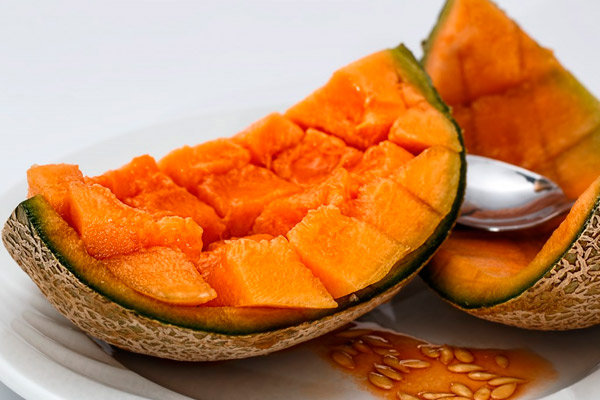
The method of processing products also plays a significant role in the possibility of irritating the mucous membrane. It should be remembered that the level of fiber can be reduced by heat treatment of the product (cooking with steam and in boiling water), as well as by grinding: grater, meat grinder, sieve. When homogenizing a product, the level of fiber in the product is reduced on average by four to six times.
If digestive disorders in the form of diarrhea occur, the foods consumed should be reviewed in favor of those in which tannin predominates: cocoa prepared on the basis of water, strong but not sweet tea, blueberries and bird cherry berries (but not raw, for example, in jelly, compotes or decoctions), a number of varieties of red wine (for example, Cahors). Cahors can be taken as a tablespoon of the drink, or as jelly.
It should be remembered that the statement allowing the consumption of strong tea with white crackers is wrong. Tannin in tea on its own effectively binds pathogenic protein in the intestine. If you consume it together with white crackers, then the tea tannin will bind with the bread protein in the oral cavity. This will neutralize its action in the intestine, without giving a positive effect.
All food consumed should be warm. Their temperature should be close to the temperature of human tissues.
It would not be superfluous to once again remind you of those products and methods of their processing that increase the motor activity of the intestines:
- Sour fruits.
- Meat "wrapped" in fascia and tendons. Freed from them, meat becomes indifferent to the effect on the intestinal mucosa.
- Raw vegetables and fruits. It is worth boiling and mashing them - they significantly reduce their provoking activity in the intestines.
This is the main thing that a patient needs to know. If there are questions or concerns, they should be asked to your doctor.
Diet for exacerbation of enterocolitis
The patient was diagnosed with chronic enterocolitis. With the right approach to treatment and compliance with all the doctor's requirements, it is possible to transfer the disease into a state of remission. But if there is a failure, the disease can return with severe attacks. The cause of a relapse can be raw vegetables consumed in increased quantities, a passion for smoked foods, hot and spicy sauces. Another catalyst for the return of the disease can be a recent infectious lesion of the body. In this case, a diet is mandatory for exacerbation of enterocolitis, which has its own number of features.
The first thing a specialist does, especially if the pathology is aggravated by a digestive system disorder, is to prescribe a fasting day for the patient. Fasting will allow the digestive organs to "rest", and irritation of the mucous membrane will decrease somewhat. In the first four to five days, until the intestines function properly, the amount of carbohydrate-rich foods is sharply reduced.
During this period, the body absorbs mineral salts and vitamins the worst. Their deficiency can lead to various disorders in the body's functioning, affecting nerve, bone and muscle cells and their functions. Therefore, these elements must be introduced additionally.
But it is worth remembering that calcium is better absorbed if there is a sufficient amount of phosphorus, fat and protein in the diet. Products such as hard cheese and cottage cheese are suitable. It is advisable to consume them, albeit a little, but every day.
To prevent anemia from developing due to restrictions, the food consumed by the patient must contain a sufficient amount of easily digestible iron.
Iron-containing products include:
- Liver.
- Hematogen, sold in any pharmacy.
- Egg.
- Meat (in this case, lean).
- Oatmeal and second grade wheat flour.
- Quince and dogwood.
- Apples and pear.
You should limit your salt intake in your diet, as it has an irritating effect on the mucous membrane.
After the bowel function has returned to normal and the exacerbation has been relieved, the patient is transferred to a full diet, stipulated by table No. 4b. If no further failures have occurred, then on average the patient "sits" on such a dietary restriction for another two to three weeks. Only after this does the attending physician allow the gradual introduction of other food products into the diet. But this must be done smoothly and, most importantly, overeating must not be allowed.
When the disease is back in remission, the doctor allows the patient to switch to unmashed foods. But otherwise, the patient will need to stick to the basics of dietary nutrition for some time.
 [ 12 ], [ 13 ], [ 14 ], [ 15 ], [ 16 ]
[ 12 ], [ 13 ], [ 14 ], [ 15 ], [ 16 ]
Diet for enterocolitis in children
If the patient with the disease considered in this article is a child, then he, like an adult, receives complex drug treatment (drugs of the group of painkillers, antibacterial, anti-inflammatory drugs, as well as a vitamin-mineral complex). The diet and feeding schedule of such a child are necessarily adjusted. The diet for enterocolitis in children is similar to the diet of an adult patient, but has its own characteristics.
Initially, when symptoms worsen, the child is transferred to a water-tea fast. The number of meals also increases and is brought up to five to six per day. Such a patient is allowed in the diet:
- Lenten meat broth.
- Strained soups.
- Porridge is allowed - a mess.
- Meat and fish should only be steamed.
- To reduce pain symptoms, you can give your baby cabbage juice.
- Mineral water (Borjomi, Essentuki No. 17 and others with similar properties) also has an effective positive effect on the child’s digestive system.
The following should be removed from the baby’s diet:
- Fruits and vegetables that have not been thermally processed.
- Black bread made from premium and first grade flour.
- Nuts.
- Other products that can irritate the mucous membrane or provoke increased gas formation in the intestines, provoking fermentation processes.
- Products that can cause an allergic reaction in the body.
 [ 17 ], [ 18 ], [ 19 ], [ 20 ], [ 21 ]
[ 17 ], [ 18 ], [ 19 ], [ 20 ], [ 21 ]
Diet 4 for enterocolitis
All diets used by doctors in the treatment of certain diseases were developed by special research institutes and experienced nutritionists under the guidance of doctors. Diet 4 for enterocolitis is used to relieve other pathologies:
- Typhoid fever.
- Intestinal tuberculosis.
- Gastroenterocolitis.
- Chronic colitis and a number of other diseases.
The main goal of table No. 4 is the most gentle diet, minimizing physical, chemical and temperature effects on the mucous membrane of the area affected by inflammation. This diet reduces the likelihood of putrefactive and fermentative processes. Dishes or products that cause activation of liver secretions (bile secretion), increased secretory function of the stomach and pancreas are also taboo in use.
The essence of the nutrition process correction is to reduce the energy value and caloric content of the diet by reducing the percentage of fats and carbohydrates. At the same time, the quantitative component of proteins remains within the physiological norm. The amount of salt consumed is also reduced.
The average daily energy value of the dishes is approximately 2050 kcal.
The recommended number of daily meals is from four to six times. Overeating is not allowed, so portions should be small in volume.
When the health condition stabilizes, the daily diet allows for the following ratios:
- Proteins – 100 g. Of these, one sixth to one seventh part is of animal origin, the rest is of plant origin.
- Carbohydrates – 250 g. Of these, only about 30 – 50 g of sugar can be consumed throughout the day.
- Fats – 70 g. Mostly (the greater half) – up to 50 g – this is cream and butter.
- Salt – from 8 to 10 g.
- Over the course of a day, the amount of liquid consumed should reach one and a half liters.
The main methods of processing are boiled products and steaming them. The patient should be served dishes in puree, mashed or liquid form (soups and drinks).
Diet menu for enterocolitis
If the patient or his relatives are faced with such a problem as dietary restriction for enterocolitis for the first time, it is very difficult for him, especially at first, to correctly compose a daily menu. To facilitate this process, we are ready to offer one of the options for a weekly diet menu for enterocolitis.
Monday
Breakfast:
- Steamed chicken cutlet – 100 g.
- Mashed potatoes – 200 g.
- A piece of yesterday's black bread - 20 g.
Lunch: cottage cheese.
Dinner:
- Meat broth – 250 ml.
- Boiled carrots, whipped in a blender – 200 g.
- Boiled fish – 90 – 100 g.
Afternoon snack: fresh juice with croutons.
Dinner:
- Semolina milk porridge – 300 g.
- Green tea – 200 ml.
Just before going to bed – a glass of acidophilus milk.
Tuesday
Breakfast:
- Sweetened mashed rice porridge – 200 g.
- Sweetened boiling water with lemon – 200 ml.
Lunch: baked apple.
Dinner:
- Buckwheat soup – 250 ml.
- Steamed meat soufflé – 90 g.
- Fruit compote – 200 ml.
Afternoon snack: rosehip infusion with crackers, with the addition of glucose.
Dinner:
- Cottage cheese and rice pudding – 300 g.
- Lightly sweetened tea – 200 ml.
Just before going to bed – a glass of fruit jelly.
Wednesday
Breakfast:
- Oatmeal cooked in milk diluted with water – 200 g.
- Lightly sweetened boiling water with lemon – 200 ml.
Lunch: warm green tea.
Dinner:
- Soup with meatballs – 250-300 ml.
- Mashed potatoes – 200 g.
- Steamed fish soufflé – 90 g.
- Apple jelly – 200 ml.
Afternoon snack: milk jelly.
Dinner:
- Buckwheat pudding with mashed lean meat – 300 g.
- Rosehip decoction with sugar and crackers – 200 ml.
Just before going to bed – a glass of tea with sugar.
Thursday
Breakfast:
- Semolina porridge cooked in milk diluted with water – 200 g.
- Milk jelly – 200 ml.
Lunch: cottage cheese casserole with tea.
Dinner:
- Rice soup – 250-300 ml.
- Mashed potatoes – 200 g.
- Steamed meat cutlet – 90 g.
- Rosehip decoction – 200 ml.
Afternoon snack: Apple puree with whipped egg whites.
Dinner:
- Buckwheat porridge - 300 g.
- Meat curd – 90 g.
- Rosehip decoction with sugar and crackers – 200 ml.
Just before going to bed – a glass of fruit juice jelly.
Friday
Breakfast:
- Potato and egg casserole – 200 g.
- Apple jelly – 200 ml.
Lunch: cottage cheese whipped with milk.
Dinner:
- Oatmeal soup – 250-300 ml.
- Boiled mashed rice – 200 g.
- Fish fricassee – 90 g.
- A piece of black bread - 20 g.
- Dried fruit compote – 200 ml.
Afternoon snack: Apple soufflé.
Dinner:
- Vegetable puree – 300 g.
- Meat casserole – 90 g.
- Lightly sweetened tea – 200 ml.
Just before going to bed – a glass of sweet juice.
Saturday
Breakfast:
- Fish fricassee – 200 g.
- Vegetable puree – 200 g.
Lunch: baked apple.
Dinner:
- Pearl barley soup - 250 ml.
- Boiled mashed vegetables – 200 g.
- Meat dumplings – 90 g.
- Still mineral water – 200 ml.
Afternoon snack: fruit jelly.
Dinner:
- Vegetable puree – 300 g.
- Fish snowballs – 90 g.
- Lightly sweetened tea – 200 ml.
Just before going to bed – a glass of kefir.
Sunday
Breakfast:
- Meatloaf stuffed with egg omelette – 200 g.
- Boiled beetroot, ground – 200 g.
Lunch: cottage cheese pie with tea.
Dinner:
- Assorted vegetable soup – 250 ml.
- Cauliflower puree – 200 g.
- Fish fricassee – 90 g.
- Rosehip decoction – 200 ml.
Afternoon snack: fruit casserole.
Dinner:
- Assorted vegetable puree – 300 g.
- Liver pate – 90 g.
- Marshmallow – 1 pc.
Just before going to bed – a glass of jelly.
Diet recipes for enterocolitis
In order to correctly build and maintain this dietary nutrition, it is necessary to strictly follow the recommendations for preparing dishes that make up the patient's diet. It would not be superfluous to get acquainted with a number of processing techniques and study the recipes for the diet for enterocolitis.
Recipe for jelly made from oatmeal
Rinse the cereal thoroughly in warm water. Add one part of pure oatmeal to two parts of room temperature water and leave to swell overnight. Stir the mixture occasionally. During this time, the cereal will give up its gluten to the liquid. Therefore, strain the mixture in the morning, pour the saturated water into a saucepan and keep on low heat until thickened.
The grain itself is not thrown away. You can cook porridge or make a casserole with it.
Rice porridge is a mess
To prepare you will need:
- Rice groats – 50 g
- Light meat broth – 250 ml
- Salt to taste
Cooking sequence:
- To obtain broth, boil the meat in water. To make the liquid less heavy, cool it and carefully remove the solidified fat from the surface.
- Strain the liquid and dilute with water, taking a volume twice as large as the broth itself.
- Place on heat and wait until it boils.
- Rinse the rice grain in several waters. Add to the boiling liquid.
- After the mixture thickens, cover the container and simmer the dish over low heat for about one hour.
- Add salt to the porridge before finishing cooking.
- Cool slightly and rub through a sieve.
- Add a piece of butter before serving.
To speed up the cooking process, rice grains can be replaced with chopped rice.
Fruit jelly
To prepare you will need:
- Dried or fresh fruits (for example, black currants) - dried 15 g, if fresh, then more
- Potato starch – 8 g
- Sugar – 10 g
Cooking sequence:
- Sort and wash the berries.
- Pour a glass of water and, putting it on the fire, cook until the berries are completely soft.
- Cool the mixture slightly and strain.
- Combine starch with cold water and mix well. Take the ratio water - starch = 4: 1.
- Carefully add the diluted starch into the strained boiling liquid.
- Add sugar and wait until it boils again.
The drink is prepared only using this technology. It is not recommended to add fruit puree. After the jelly has been poured into cups, it is advisable to sprinkle the drink with powdered sugar. This will prevent the surface from forming a jelly film.
Meatballs
To prepare you will need:
- Lean meat, cleared of fascia, tendons and films – 110 g
- Rice – 8 g
- Egg - fourth part
- Water – 50 ml
- Butter – 5 g
- Salt – 1 g
Cooking sequence:
- Clean and wash a piece of meat. Boil it, and after cooling, mince it three times.
- Cook rice in water until done. Cool.
- Combine the minced meat and cooled rice.
- Now put everything together again through a meat grinder.
- Add egg and salt to the rice and meat mixture. Mix well.
- Roll the resulting minced meat into balls and flatten them to form patties.
- Boil the semi-finished product using steam.
- When serving, pour melted butter over the dish.
Steamed omelette
To prepare you will need:
- Eggs – 2 pcs.
- Butter – 5 g
- Water – 80 ml
- Salt – 1 g
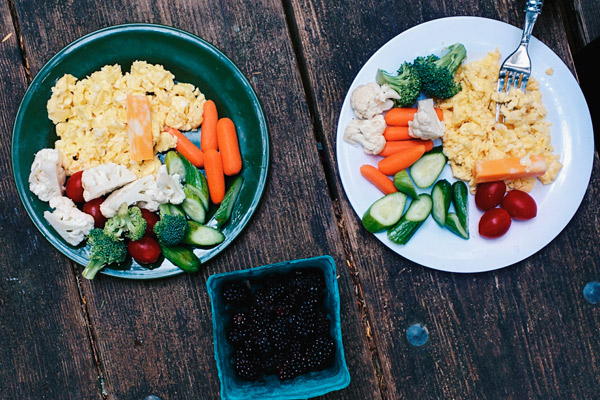
Cooking sequence:
- Beat the eggs lightly.
- Add water and salt. Mix well.
- Strain the mixture.
- Place in a portioned container and cook using steam. The poured layer should be less than four centimeters. A large height of the dish will not allow it to cook properly. Viable microbes may remain in the egg mixture.
- When serving to a patient, sprinkle the dish with melted butter on top.
Steamed curd soufflé
To prepare you will need:
- Cottage cheese (homemade or store bought) – 100 g
- Egg - half
- Butter – 5 g
- Semolina – 10 g
- Sugar – 5 g
Cooking sequence:
- Rub the cottage cheese thoroughly using a sieve.
- Add other ingredients (except butter) to the mixture and mix thoroughly. Only the yolk is added to the mixture.
- The egg whites are beaten separately until they form a thick foam.
- The protein foam is carefully added to the curd mass in small portions.
- Transfer the curd dough into a greased form and place it on steam to cook.
Jelly made from kefir
To prepare you will need:
- Kefir (we take not fresh, but yesterday's or three-day-old) - 100 g
- Gelatin - 3 g
- Water – 10 g
- Sugar - tablespoon (20 g)
- You can add a gram of cinnamon
Cooking sequence:
- Mix kefir with cinnamon and sugar.
- At the same time, pour water over the gelatin and let it sit to swell.
- The swollen gelatin is gradually added to the kefir, stirring constantly.
- The mixture should be thoroughly mixed until the sugar and gelatin are completely dissolved.
- Pour the resulting kefir mass into molds and place in a cool place to harden. This can be a refrigerator or a cellar.
Steamed fish cutlet
To prepare you will need:
- Fish fillet – 100 g
- Rice – 8 g
- Butter – 5 g
- Salt – 1 g
- Water – 15 g
Cooking sequence:
- Take the fish apart, separate the fillet and remove the bones. Mince the meat twice.
- Rinse the rice twice in cold water and boil until fully cooked. Cool.
- Mix the fish and grain and mince again.
- Salt the fish and rice mince and form into cutlets.
- Cook them using steam.
- Serve drizzled with butter.
 [ 25 ]
[ 25 ]
Diet Soup with Meatballs
To prepare you will need:
- Fish fillet – 80 g (pike perch will do)
- Bread crumbs (the product does not have to be fresh) – 10 g
- Parsley greens - a couple of sprigs
- Salt – 1 g
- Water – 15 g (for making minced meat)
- Fish broth – 350 ml
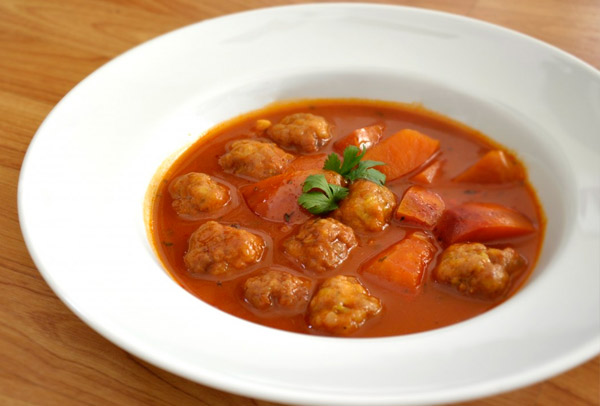
Cooking sequence:
- First, wash and cut the fish, separating the fillet from the bones. Wash everything thoroughly.
- Add the fish head, fins, spine and skin to a pot of water. Boil the broth. Strain the liquid thoroughly.
- Soak stale bread in water.
- While preparing the broth, mince the pike perch fillet.
- Add the soaked bread (squeeze out excess water). Mix well.
- Grind again in a meat grinder.
- Add salt. Stir.
- Beat the mince: take the meat in your hands and throw it back into the container or onto the cutting board with force. This process will compact the mince.
- Divide into portions and form into balls.
- We boil them in boiling water, then place them in a water bath.
- Before serving, pour fish broth into a bowl, add meatballs and herbs.
Lenten semolina porridge
To prepare you will need:
- Water – 250 ml
- Semolina – 50 g
- Butter – 5 g
- Salt – 2 g
Cooking sequence:
- Bring the water poured into the container to a boil and add salt.
- We do not add the semolina all at once to the boiling liquid, but in a small stream, stirring all the time. Such precaution will not allow lumps to form, and the porridge will be homogeneous.
- Stirring constantly, cook for eight to ten minutes.
- A piece of butter is placed directly into the plate with porridge.
Alternatively, you can cook this porridge in light meat broth. You can get it by boiling the meat. Cool the liquid, remove the top fat and strain. Dilute with half the volume of water. Boil. The broth is ready.
Food - it nourishes the brain and body. But with the development of certain pathologies, it can cause severe suffering to a person, aggravating the situation. Therefore, when stopping many diseases, restriction in food intake is not the last place in the treatment protocol. A diet for enterocolitis also brings an invaluable effect to the body. Strict restrictions allow you to relieve the main load from the digestive organs, and the level of irritation of the mucous membrane is reduced, which is important for effective treatment.
What can you eat with enterocolitis?
Once the diet has been prescribed, the question naturally arises of what can be eaten with enterocolitis, which foods are allowed in any quantity, and which should be taken in limited quantities.
The following dishes and food products are permitted for consumption:
- Bakery products:
- Wheat bread, yesterday's bread or croutons.
- Unsweetened cookies.
- It is very rare to be able to afford pies made from unleavened dough. Filling: ground lean meat, boiled egg, cottage cheese, fruit and vegetable jam.
- Strained first courses on water or low-fat meat broth. In this case, vegetables and cereal filling should be thoroughly cooked, almost to homogeneity.
- Lean meat (lamb, rabbit, beef, poultry), steamed or boiled and minced in any available way: cutlets, soufflé, meatballs, cutlets, jellied meat, meatballs.
- Non-fatty fish (mainly sea fish). Cooking is similar to meat processing methods. Lightly salted grain caviar.
- Vegetable casseroles, pureed dishes.
- Kissels, mousses, sorbets, fresh juices and fruit compotes.
- Porridges cooked in water and boiled to a mush. Allowed cereals include rice, semolina, rolled oats, ground buckwheat.
- Juices, but not sour fruits.
- Milk and fruit jellies.
- Steamed omelette.
- Puddings based on mashed cereals or vermicelli.
- Mild hard cheeses.
- Soft-boiled or poached egg.
- Fresh cottage cheese (low fat).
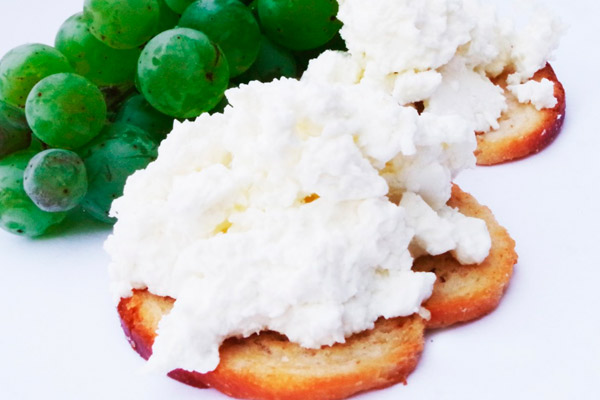
- For something sweet, you can sometimes treat yourself to marshmallows or marmalade.
- Whole milk is not recommended to be drunk as a separate dish. It is allowed to be used only for preparing other dishes.
- Kefir and yogurt.
- Limited - butter.
- Parsley and dill greens – as seasoning.
What should you not eat if you have enterocolitis?
If there is a list of food products that are allowed for such a patient to eat, then naturally there is another list of what cannot be eaten with enterocolitis.
- Bakery products:
- Freshly baked bakery products, as well as those prepared on the basis of rye flour.
- Pancakes and fritters.
- Pastries, cakes, pastries.
- Fatty meats. Sausages, canned meats, smoked products.
- Milk and its processed products (with rare exceptions).
- Any fats except butter, which is allowed in limited quantities.
- Egg dishes, hard-boiled, fried or eaten raw.
- Vegetables and fruits, especially raw.
- Cereals: pearl barley, millet, barley, crumbly porridge.
- Fatty fish. Smoked meats, canned fish, marinades.
- Fruits of the legume family.
- Pasta and pasta products. Pasta casseroles.
- Soups with strong and fatty broth. Milk soups.
- Dried fruits.
- Honey, jams, preserves, sweets, cakes.
- Spices.
- Fresh and dried mushrooms.
- Carbonated and cold drinks. Kvass. Sour juices.
- Vegetable and fruit preserves.
- Onion and garlic.
If you have any questions, it is best to ask them to your doctor.

